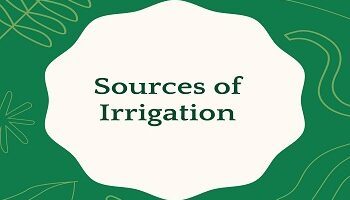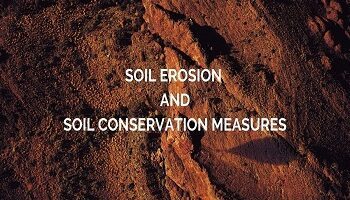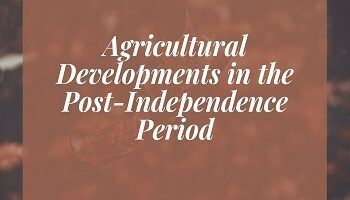Table of Contents
Watershed Management:
A watershed is a reservoir in which the rainwater falling on a vast hilly area is made to accumulate for recharging the water table and for keeping it reserved for domestic and agricultural purposes of local communities. It may also be defined as the land area from which water drains under gravity to a common drainage channel. Thus, a watershed is a delineated area with a well-defined topographic boundary and one water outlet.
In watershed development, the water is conserved at the source i.e. the rainwater falling on hills is stored and conserved in valleys. Civil structures like contour bunds, trenches, gully plugs, check dams, and percolation tanks are constructed to conserve water and recharge the groundwater. The watershed management also aims at protecting precious soil from getting eroded due to rainwater run-offs. Integrated Watershed Management incorporates the full participation of villagers at the local level.
The watershed is the basic unit of development which involves a manageable subunit of the hydrological cycle or water cycle. The Integrated Watershed involves various other elements that are linked with the watershed. These elements are conservation, regeneration, and judicious use of natural resources. Besides this, the integrated watershed keeps a balance between human demands and the availability of the resource.
Watershed Degradation:
The watersheds are very often found to be degraded due to uncontrolled, unplanned, and unscientific land use activities. Overgrazing, mining, deforestation, industrialization, shifting cultivation, construction activities, natural and artificial fires, soil erosion, and ignorance of local people have been responsible for the degradation of various watersheds.
Objectives of Watershed Management:
Rational utilization of land and water resources for optimum production causing minimum damage to the natural resources is known as watershed management. The objectives of watershed management are as follows:
(1) To rehabilitate the watershed through proper land use adopting conservation strategies for minimizing soil erosion and moisture retention so as to ensure good productivity of the land for the farmers.
(2) To manage the watershed for beneficial developmental activities like domestic water supply, irrigation, hydropower generation, etc.
(3) To minimize the risks of floods, droughts, and landslides.
(4) To develop rural areas in the region with clear plans for improving the economy of the region.
Major Areas Covered Under Integrated Watershed Management:
Integrated Watershed Management covers different areas of the environment which are listed below-
(1) Management of soil and water.
(2) Development of sustainable agriculture.
(3) Improvement in cattle rearing or animal husbandry.
(4) Development of fodder for cattle.
(5) Development of Agro-forestry i.e. growing commercially useful trees on demarcation lines of crop fields.
(6) Management of rural energy.
(7) Development of community.
Presently, Integrated Watershed Management is mainly carried out as a major project in Orissa, Karnataka, Tamil Nadu, and Madhya Pradesh. However, the development of watersheds is going on in many other states also on a community basis. The Watershed Management is ideal at a place that experiences short rainfall and which has meager arrangements for irrigation.
Need for Integrated Watershed Management:
The implementation of Integrated Watershed Management is needed for the sustainable development of communities in a particular area. It is most needed in water-scarce areas for the following activities-
(1) For increasing production-oriented works like increasing agricultural production and doing other income-generating activities.
(2) For implementing Agro-forestry and Soil Conservation Programmes.
(3) For the empowerment of local communities so that they can generate resources and can maintain watersheds themselves.
(4) For solving water and environment-related problems.
(5) For planting trees to meet the demands of fiber and fodder.
(6) For managing and stabilizing hill slopes and terraces.
(7) For controlling soil degradation through salinity and water logging.
(8) To assuring adequate quantity and quality of usable water through-
- The cultivation of less water-consuming crop varieties.
- The protection of water bodies.
- The construction of check dams.
- The development of irrigation facilities.
- The development of water treatment facilities.
- Proper disposal of wastewater and recharging the groundwater.
(9) For controlling floods and damages caused due to floods by-
- The construction of flood control dams along river banks.
- The plantation of trees in river basins to check soil erosion.
- The protection of wetlands.
- The construction of water diversion channels.
- The control on overgrazing.
Measures Adopted for Watershed Management:
The basic techniques of watershed management involve the promotion of plant cover in the watershed and delaying the flood flow for a longer duration in the area so that more of it moves down to recharge the sub-surface water table. This becomes more complicated when the watershed is colonized by numerous human settlements. Some of the measures adopted for watershed management include-
(1) Minimizing forest clearance and removal of plant cover.
(2) Promotion of plant cover in general and in particular over the slopes of the hills.
(3) Adoption of sound farming and forestry practices to reduce surface runoff.
(4) Enhancing organic matter content of soils by leaving crop residues in the fields and adding more of it to prevent desiccation and erosion.
(5) Erection of props, check dams and digging of pits, trenches, and small check dams so that more water is retained in the area.
(6) Conservation of wetlands in the way of river channels to enhance the natural surface storage capacity of river channels.
Advantages of Watershed Management:
(1) Increase the income and production of the community.
(2) Increase the life of the downstream reservoirs and dams.
(3) Mitigates droughts and floods.
(4) Brings rivers back to life and recharge the groundwater levels.









Comments (No)